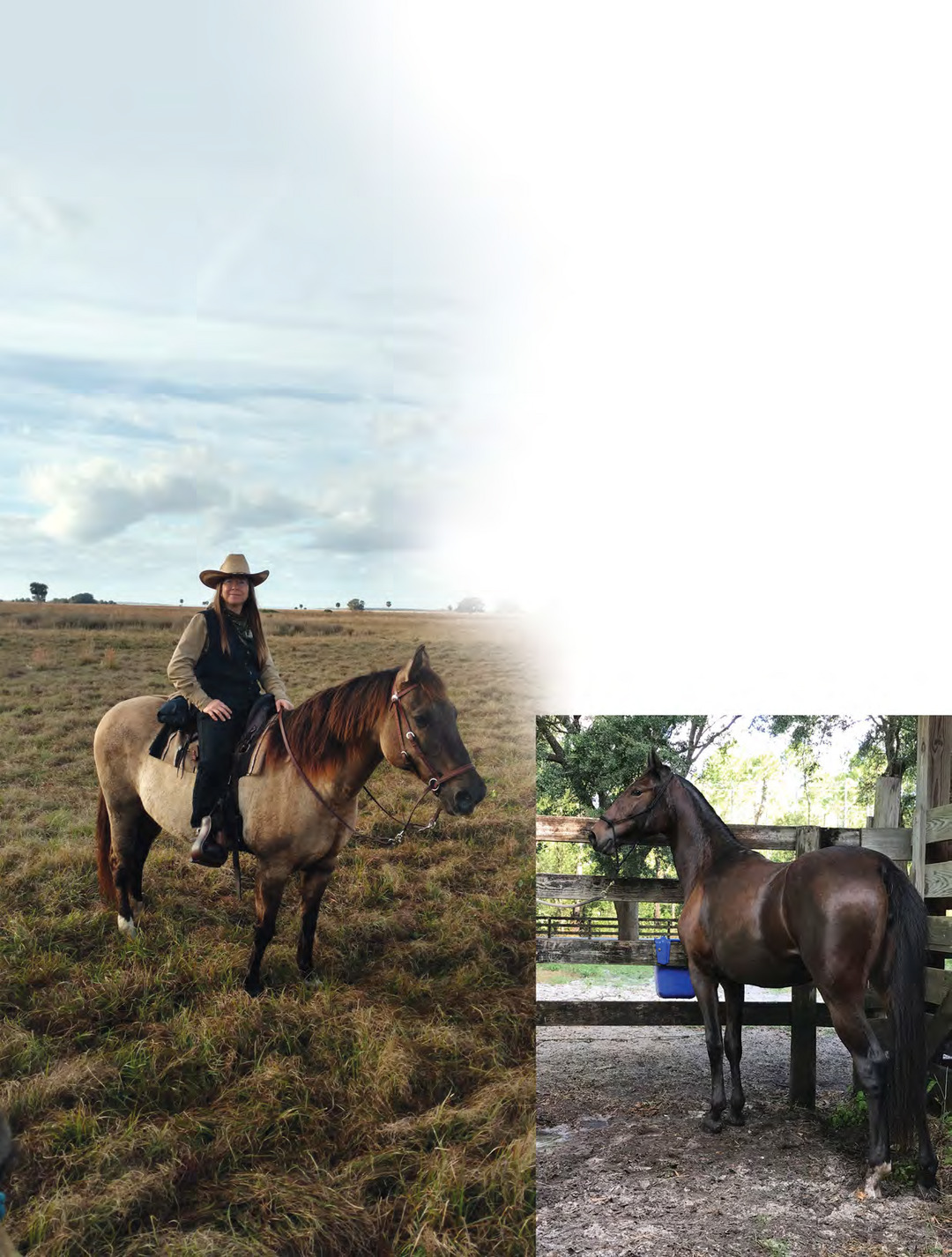VET VIEW
EQUINE OCULAR DISEASE IS COMMON ALWAYS TREAT ANY UNUSUAL EYE PROBLEM AS AN EMERGENCY
A
Written by: Susan E. Blackwell, CVT
horse with a painful, squinty, swollen eye is an obvious cause for concern—especially if the eye has a thick or discolored discharge. Ocular disease is common in the horse and may manifest itself by presenting redness, tearing, squinting or cloudiness of the eye, along with a vision problem. Equine eye problems can include simple sources of irritation such as allergies or insects. Or the problems can range from the hereditary breed disposition of uveitis to the very complex treatment process of a variant type of corneal ulcers and lacerations.
ALLERGIES OR IRRITANTS Absent any other signs of trouble, a horse who consistently has tears running down its face may have a blocked tear duct. Technically called nasolacrimal ducts, these tiny passages drain excess tears from the eyes through the nose. When these ducts become blocked, tears collect and spill over the bottom lid. Ducts become blocked for a variety of reasons, including the mucus in equine tears and the simple fact that some horses have narrower ducts than others. A veterinarian can flush a duct by running a small
10
F LO R I D A C O U NTRY D e c e m b e r | J a n u a r y 2 0 1 9
tube up through the horse’s nose into the end of the channel. Then a squirt of saline will usually clear the blockage. During early morning and late evening turnout, management of the equine eye should also include insect control. Make use of fly masks, stall fans and insect repellent.
UVEITIS Another common equine ophthalmic disease is uveitis, which is often called “moon blindness.” It is an immune-mediated disease that is typically recurring. It can be a lifelong, painful condition of the eye that is often hereditary in some horse breeds such as Appaloosas. Symptoms include extreme watering of the eyes, sensitivity to light and swollen eyelids, along with diffuse cloudiness present in the globe of the eye. Uveitis is extremely painful and can affect either or both eyes of the horse. Common managing treatments may include both topical and oral antiinflammatories, and in severe cases, removal of the affected eye in order to eliminate the pain. CORNEAL ULCERS A corneal ulcer is another one of the most commonly acquired ocular diseases in the horse. It often develops in the horse after something environmental—






